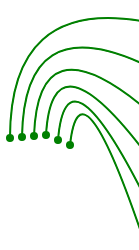Overall objective of the project
The overall objective of the joint project is to provide a system of human-technology interaction for the simple and rapid early diagnosis of Alzheimer's dementia. This will be created by means of AI-based evaluation of EEG time series in combination with cognitive neuropsychological test sets ("test battery"). Within the framework of a patient module, an intelligent emotional-empathetic digital assistant (IEEDA) is to be integrated, which communicates with the patients linguistically in an empathetic form and is also used as a "mental fitness coach" (MFC). The IEEDA serves both as a follow-up of AD and as a "digital assistant" in the daily life of the patients. The physician module is used for early detection and analysis of the stage of AD.
From the medical side, the IASON system is used for the first medical history of suspected AD. Furthermore, the permanent monitoring and analysis of the course of AD opens up qualitatively better prognosis and diagnostic possibilities (e.g. to check the effectiveness of medication when it is administered) for the development of AD on the basis of detailed patient data recorded at short intervals.
The overall objectives of the IASON sub-project of Tokeya include:
- the establishment of a new, cost-effective biomarker (electroencephalogram - EEG) for the diagnosis of AD (Alzheimer's disease) and its precursor processes
- enabling progress control of (future) drug development through cost-effective quantitative EEG (qEEG) by increasing the number of examinations (shorter observation intervals) with a larger number of test persons
- increasing the granularity of neuropsychological tests (i.e. finer gradations) and thus establishing a diagnostically new, scientifically validated precursor stage of AD, in which cognitive deficits are not yet apparent
- the establishment of artificial empathy as a necessary (verbal) form of communication between humans and AI-based digital assistants
A further research focus in the subproject is the realization of an IEEDA (Intelligent Emotional-Empathetic Digital Assistant) as a patient module. For this, the following functions have to be generated as software sub-modules:
- Speech recognition with NLP (natural language processing)
- Emotion recognition via sub-symbolic language and, if necessary, written form elementsArtificial empathy in the form of e.g. a semantic network for states of mood, which links recognized emotions e.g. with modifications of the course of the conversation and thus enables AI-based empathic communication with the patients
- “mental fitness coach” (MFC) including graphic games with the possibility of recording components of the written form using the electronic pen
- Comprehensive communication control program, which linguistically appears to the patient as IEEDA “identity”, which requires the integration of the aforementioned sub-modules into this IEEDA “identity”.
Physician and patient modules are then linked to the overall IASON system. Thereby interfaces for the external communication of the IASON system (physician, relatives, caregivers, nurses), interfaces to the involved hardware (EEG device) and software are created, as well as a suitable human-machine communication interface is programmed.
After an IASON demonstrator is available, the user interaction with patients and the suitability of Tokeya’s IASON system for everyday use will be investigated. Based on the results, the system will be continuously adapted and improved.
The goals in the FAU sub-project are closely linked to the goals in the Tokeya sub-project.
An essential goal is the “preliminary study to determine the patient requirements that have to be met by the design of the IASON system, above all the IEEDA, in order to ensure a far-reaching practical orientation of the system”, which is to be carried out jointly with Tokeya and the associated partner Rummelsberg RDA. The guideline, the practical orientation of the IEEDA, is to be achieved in advance of its creation.
This goal is closely linked to the verification of the achieved suitability for daily use of the IEEDA by FAU after completion of the demonstrator by Tokeya. Here, great attention is paid to the ability of FAU’s staff to empathetically ascertain the needs and requirements of patients for a “digital assistant” such as the IEEDA, as well as the difficulties of patients with the technology offered.
Further goals in the course of the project include the successful preparation of the review of the project by the ethics committee, the recruitment of patient groups and their examinations, which are carried out in close cooperation with Tokeya.
An important goal of FAU's work is to contribute the existing knowledge and experience gained at FAU in a large number of projects to the validation study of the IASON system. The aim is to provide a solid scientific basis for the validation of the IASON system, which will enable its actual use in the future diagnosis and care of Alzheimer's patients. Another important goal of FAU is to transfer the results of the IASON project directly into the actual working domain of FAU, the internet-based therapeutic intervention for depression patients.


 English
English  Deutsch
Deutsch